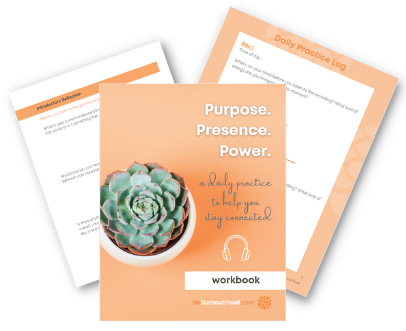Practical Advice for Dealing with Micro-Stresses
2023.01.19
You've probably acclimated to micro-stressors in your life and consider them to be "normal". It doesn't have to be that way. Read on to break the cycle.
I'd often end a workday thinking "no big stressful events happened today so why am I drained?"
I couldn't quite put my finger on anything and so the lack of specificity about the stress I was feeling routinely caused additional stress.
"Micro-stresses" is a term that summarizes something I knew on some level but was never quite able to articulate.
An HBR article explains it well:
Stress comes to us all in tiny little assaults throughout our day — what we call “micro-stresses” — for example, the frustration of a colleague missing the mark on a joint project, or the emotional toll of a trusted work colleague moving on. These micro-stresses come at us all day long, through relationships and interactions that are too numerous and high velocity to easily shake off. The problem is that most of us have come to accept micro-stresses as just a normal part of a day. We hardly acknowledge them, but cumulatively they are wearing us down. And what’s worse is that the sources of these micro-stresses are often the people — in and out of work — with whom we are closest. We don’t have to accept micro-stresses as destiny. This article discusses the tools we need to mitigate these stresses in our lives. Stress patterns are often predictable, and if we see them for what they are, we can build the support network, mindset, and constructive responses that we need to head them off.
TL;DR
Researchers categorize micro-stresses as those that:
- drain your personal capacity (time and energy) for handling life’s demands
- deplete your emotional reserves
- challenge your identity and values.
The HBR article contains a legitimately helpful worksheet to help you assess the micro-stresses in your life across 12 areas (e.g., poor communication norms, unpredictable behavior from others) and 6 kinds of relationships (e.g., boss, peers, loved ones). Definitely check it out.
Talk it Out?
Normally, it can be helpful to talk about stressful events with others. This often helps us move past them. But as the article points out, you can easily encounter 20-30 micro-stresses per day! No one's got time to debrief that much and still get anything done.
So what to do?
The article recommends identifying just 2-3 micro-stresses and focus on mitigating them. Sounds like a good starting point to me.
It also recommends distancing yourself from people or activities that cause you stress. I find this to be somewhat unhelpful advice as it is often not practical in the workplace. But, if you can reasonably avoid stressors then of course I'd say do that.
It also recommends to keep things in perspective. Maybe this is helpful if you blow things out of proportion but to me it undercuts the argument of micro-stresses in the first place --- which is basically like if only one happened per day then it wouldn't be a big deal but because 20-30 happen, it is the cumulative effect that gets to you.
Regardless, being aware of micro-stresses as a concept is helpful - especially if like me you couldn't quite figure out why you were drained at the end of a day where "nothing big and stressful" happened.
Homework
- Read the article, fill out the worksheet, and identify the 2-3 micro-stresses you want to work with.
- Brainstorm a list of ideas to mitigate them.
- Debrief your list with a trusted person and come up with an experiment you'd like to try this week when you experience a stressor.
